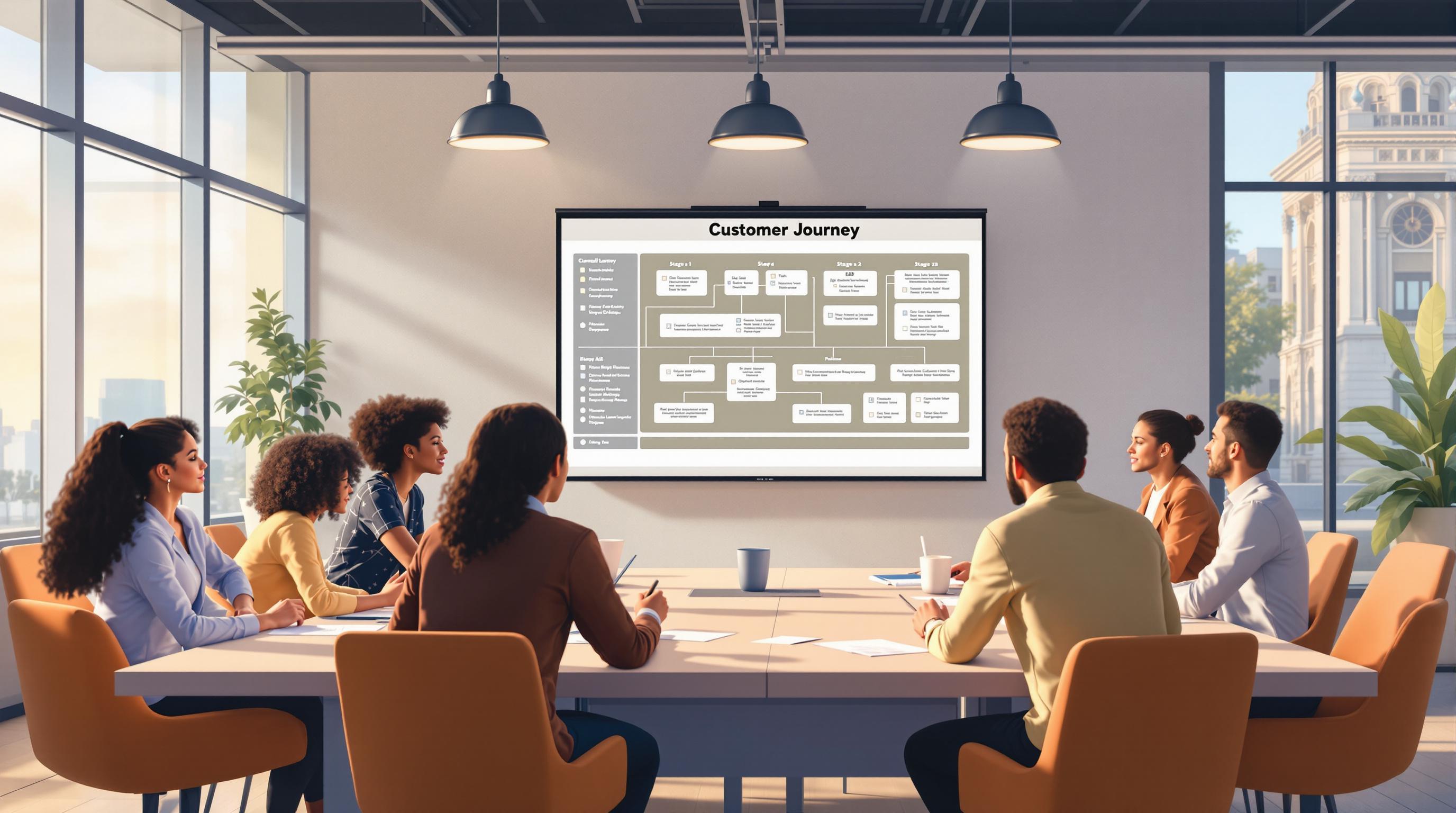Want to ensure your email campaigns run smoothly without downtime or deliverability issues? Here's what you need to focus on:
- Evaluate Your Infrastructure: Identify weaknesses in hardware, software, and security setups like SMTP servers, DNS records, and SPF/DKIM/DMARC configurations.
- Set Up Redundancy: Use load balancers, failover systems (cold, warm, or hot), and real-time data synchronization to handle failures and high traffic.
- Improve Deliverability: Warm up IPs, monitor delivery metrics, and choose providers with high availability features.
- Test and Maintain: Simulate high-traffic scenarios, apply updates promptly, and train your team for emergencies.
- Ensure Compliance and Security: Follow email regulations, encrypt data, and implement robust backup strategies.
Quick Overview
| Key Focus | Actions |
|---|---|
| Infrastructure | Review hardware, software, and network components. |
| Redundancy | Use failover systems and auto-scaling for continuous operations. |
| Deliverability | Monitor metrics, warm IPs, and optimize sender reputation. |
| Maintenance | Test systems regularly and apply updates. |
| Security | Encrypt data, comply with regulations, and create disaster recovery plans. |
A strong email infrastructure ensures uninterrupted campaigns, better deliverability, and reliable performance even during high-volume periods. Let’s dive deeper into each step.
Email Infrastructure Explained
Step 1: Evaluate Your Current Email Infrastructure
Taking a close look at your email infrastructure helps you spot weaknesses and create a system that can handle large-scale campaigns effectively.
List Existing Components
Start by listing out all the parts of your current setup. This gives you a clear picture of what’s working and where vulnerabilities might exist:
| Component Type | Key Elements to Document |
|---|---|
| Hardware | SMTP servers, backup systems, load balancers |
| Software | Mail transfer agents, monitoring tools, authentication systems |
| Network and Security | DNS records, MX entries, IP addresses, SPF, DKIM, DMARC configurations |
Critical Dependencies and Common Issues
Pay special attention to core elements like SMTP servers, DNS settings, and authentication protocols. If you're using cloud-based services, review your provider's SLAs. For on-premise setups, check for hardware dependencies [1].
Here are some key areas to evaluate:
- Single Points of Failure: Ensure your mail servers and DNS configurations are redundant and that SPF, DKIM, and DMARC are properly set up [2].
- Monitoring Gaps: Check for missing tools or processes in tracking delivery rates, bounce management, and spam complaints [3].
- Scalability: Determine if your infrastructure can handle spikes in email volume, especially during busy seasons.
Be on the lookout for common challenges:
- Monitoring Blindspots: Make sure you’re tracking everything from delivery rates to spam complaints. Missing these metrics can leave you in the dark [3].
- Scalability Issues: Test whether your current system can manage higher email volumes without breaking down.
Addressing these problem areas ensures your infrastructure is ready for the next step: setting up redundancy and failover systems.
Step 2: Set Up Redundancy and Failover Systems
Building a dependable email infrastructure requires multiple safeguards to handle failures and manage traffic surges. These measures ensure your email campaigns keep running smoothly, even when technical issues arise.
Server and Network Redundancy
Cloud services often rely on load balancing and auto-scaling to distribute traffic and avoid overloads. This setup helps maintain steady performance during periods of high demand [2].
| Component | Purpose | Strategy |
|---|---|---|
| Load Balancers | Distribute Traffic | Directs requests across multiple servers |
| Auto-scaling | Manage Capacity | Dynamically adjusts resources based on demand |
Failover Protocols for Downtime
Select a failover type that fits your operational needs:
- Cold Failover: Offline backups activated only during a failure.
- Warm Failover: Standby systems that receive occasional updates.
- Hot Failover: Fully synchronized backups ready for immediate use.
"Redundancy and failover can be used to dramatically reduce the potential of any downtime to ensure that you're always on, and always available." [4]
To go beyond basic MX backups, consider backup email systems that allow both sending and receiving during outages. This ensures uninterrupted communication when primary systems fail [1].
Data Synchronization Across Systems
Keep your systems reliable with these practices:
- Use real-time replication to ensure email data stays up-to-date during transitions.
- Conduct regular system integrity checks.
- Define acceptable data loss limits and align synchronization schedules accordingly.
If you're searching for email providers that prioritize reliability, the Email Service Business Directory (https://emailservicebusiness.com) offers a curated list of platforms known for their strong redundancy features.
Once you've established redundancy and failover systems, it's time to focus on enhancing email deliverability and optimizing performance.
sbb-itb-6e7333f
Step 3: Improve Deliverability and Performance
Once you've set up redundancy systems, the next step is to fine-tune your email infrastructure for better deliverability and efficiency. The goal here is to ensure your emails consistently reach the right inboxes while keeping your system running smoothly.
Choose the Right Email Service Provider
Your choice of email service provider can make or break your email campaigns. Look for providers that offer features like high availability, load balancing, and auto-scaling. These capabilities not only support uptime during heavy campaigns but also work seamlessly with your redundancy setup to improve email delivery.
The Email Service Business Directory (https://emailservicebusiness.com) is a solid resource to find providers adept at handling enterprise-level solutions and high-volume campaigns.
Manage IPs and Warm Them Up
To build a strong sender reputation, start small and gradually increase your email sending volume. Use segmented IP pools to spread out high-volume campaigns and avoid spam filters [5]. This strategy ensures steady delivery rates while safeguarding your reputation across different types of emails.
Monitor Metrics and Log Errors
Keep an eye on key metrics like delivery rates, error codes, and server performance. Real-time monitoring is essential for spotting issues quickly, such as high bounce rates or slow server responses. Set up automated alerts for critical errors and maintain detailed logs to troubleshoot effectively.
"Real-time monitoring allows for quick identification of issues, while detailed error logging provides valuable information for troubleshooting" [2].
Step 4: Test and Maintain
Keeping your email infrastructure running smoothly is key, especially during high-volume campaigns. Regular testing and updates help avoid system failures and ensure emails are delivered as expected.
Simulate High-Traffic Scenarios
Load testing helps identify weak spots by mimicking heavy email traffic in a controlled environment.
"Load testing can be conducted by simulating a high-traffic scenario, sending a large volume of emails to a mail server" [2].
| Testing Component | Monitoring Focus | Action Items |
|---|---|---|
| Server Response | Processing speed | Track email processing times; adjust resources |
| Network Performance | Bandwidth issues | Monitor for bottlenecks; optimize routing |
| System Integration | API connections | Test failover mechanisms; ensure redundancy |
After testing, the next step is to keep the system updated and ready for action.
Regular Updates and Patching
Keeping software and security protocols up to date reduces risks. For systems designed to minimize downtime - less than 5.26 minutes a year - proactive maintenance is non-negotiable [4].
Key areas to focus on:
- Security Patches: Apply crucial updates within 24 hours of release.
- Software Updates: Set up a monthly maintenance schedule.
- System Compatibility: Test all updates in a staging environment before rolling them out.
Even with top-notch infrastructure, your team's ability to respond to issues is just as important.
Team Training and Preparedness
Technology alone isn’t enough. A well-trained team ensures your systems are used effectively, even under pressure.
1. Technical Training
Make sure your team understands the ins and outs of your email infrastructure and monitoring tools. Offer hands-on training for handling failovers and resolving errors.
2. Response Protocols
Create clear escalation procedures and document common problems with step-by-step solutions in an easy-to-access knowledge base.
3. Regular Drills
Run monthly emergency drills to prepare your team for different scenarios. These practice runs build confidence and ensure readiness when it matters most.
Step 5: Ensure Compliance and Security
Building a reliable email system means prioritizing both security and compliance. These measures are key to protecting sensitive data and keeping operations running smoothly. Here's what you need to know.
Backup and Disaster Recovery Plans
A solid backup plan is non-negotiable. The 3-2-1 strategy is a great approach: keep three copies of your data, store them on two types of media (like local and cloud), and ensure one copy is off-site for emergencies. This setup minimizes risks and keeps your email systems functional, even during unexpected events.
Don’t just set it and forget it - run disaster recovery tests every quarter. These simulations help confirm that your systems can bounce back quickly and highlight any weak spots before they turn into real problems.
Compliance with Email Regulations
Staying on top of email regulations is crucial. Use explicit opt-in processes, maintain detailed consent records, and always include a clear, easy-to-use unsubscribe option that processes requests within 10 business days. Keeping suppression lists updated and tracking all data processing activities ensures you avoid compliance issues [5].
Data Encryption and Privacy Practices
Encryption tools play a big role in keeping your emails secure without affecting delivery speed. Protecting email data at every stage is critical for maintaining trust.
"Using outdated SSL/TLS versions can expose emails to interception" [2].
Key security practices to follow:
- Use the latest TLS protocols with proper certificate management
- Enable end-to-end encryption for sensitive messages
- Retain only necessary data, automate data purging, and schedule regular security audits
If you're searching for a secure email service provider, the Email Service Business Directory is a helpful resource. It allows you to compare providers based on their security features and compliance capabilities.
Conclusion: Checklist Summary and Key Points
With compliance and security measures in place, here's a streamlined readiness checklist to ensure your email infrastructure is prepared for high-volume campaigns.
Final Checklist for Readiness
A strong email infrastructure is the backbone of successful campaigns. Here's what to focus on:
| Area | Key Actions |
|---|---|
| Infrastructure | Review and fine-tune your current setup |
| Redundancy | Set up failover systems and synchronization |
| Performance | Manage IPs and track performance metrics |
| Maintenance | Schedule regular testing and updates |
| Security | Prioritize compliance and safeguard systems |
Why a Strong Email Infrastructure Matters
A well-built email infrastructure ensures smooth operations, even during unexpected disruptions. By implementing redundancy, failover systems, and effective IP management, you can improve inbox delivery rates and build trust with both email providers and recipients. This trust is crucial for maintaining a reliable and scalable email operation that supports high-volume campaigns without compromising quality.
Resources for Ongoing Support
To keep your infrastructure aligned with industry standards, consider consulting the Email Service Business Directory for providers specializing in email infrastructure solutions.
Maintain peak performance by focusing on:
- Applying regular system updates and security patches
- Monitoring delivery metrics consistently
- Providing thorough training for your team
- Testing failover systems on a routine basis


